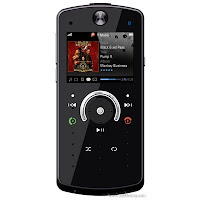Himalayan is the latest branding initiative by Tatas. The brand which originally belonged to the Balsara Group came to the Tata fold in 2007. In 2008, Tatas began to aggressively promote

this brand.
The Indian bottled water market is around Rs 1200-1500 crore ( source: FE, Domain B ) . However Livemint puts the market at around Rs 8500 crore. The market is growing at a rate of 25% per year.
The bottled water is divided into Natural Water segment and Ordinary bottled water. In Natural water category, the water is packaged from the source and no processing is done. The ordinary bottled water is chemically processed. Natural water category is hardly 10% of the total market.
Himalayan is the market leader in the Natural water category . Before being taken over by Tatas , the brand was focusing on institutional markets and also international markets. Infact Himalayan is the only Indian brand of natural bottled water to be internationally accepted and markets across Europe and US.
Himalayan has now forayed into the consumer market in India. The market leader in Indian bottle

d water market is Bisleri with a market share of 16 % followed by Kinley and Aqua Fina with a share of 14% The rest of the market is dominated by regional and unorganised products.
Himalayan is a premium brand priced well above the ordinary mineral water. Hence the challenge is to convince the customers to pay a premium price for a product like water. The USP of Natural water is that they are Naturally pure and also has a distinct taste derived from its origin.
The brand is currently running a tvc across the country
watch the tvc here :
HimalayanThe brand has taken the tagline " Live Natural " highlighting the main strength of the brand.
For a marketer of branded water,the challenges are many :
1.Water is a commodity : Hence to brand it and sell it is in itself a herculean task.
2.Water is perceived to be a freely available resource : Hence customers will have a mental block in paying for drinking water.
3.Between brands, to differentiate is not easy
4. The market is price sensitive.
5. The market is mostly restricted in terms of usage situations. Most of us buy mineral water only while traveling. ( ofcourse in places where pure water is unavailable, even households buy mineral water)
So far ,brands like Bisleri has built the market on Purity and Safety. Although we have lot of water sources, availability of potable water is still a problem. Especially when one is traveling , the risk is higher. Hence the bottled sealed water offered the solution. The wordings on the bottle further reassured the customers about the purity of the water.
Bisleri is almost generic to the category and has built the brand with heavy investment.
Himalayan has the task of adding more value to it because of the premium pricing. Hence the brand has to take some laddering up inorder to appeal to the consumers.
The current campaign lives up to the expectation. What was appealing about the brand was the Pink color and the bottle. My wife , after seeing the ad, exclaimed that she is tempted to buying the water.
Tatas has retained some of the unique brand elements like the color. But it had done some changes in the bottles and graphics . The bottle has been designed by SIPA of Italy and Rediffusion has done the other graphic changes. Like in the case of the global icon Absolut which uses bottle shape as differentiators, Himalayan is also trying to offer visual differentiation using label color and graphics.
Another strength of Himalayan is the brand name. Himalayan offers instant imagery of the Himalayas and brings in the visuals of Cool, Pure, Indian and Natural imagery.
Alarmed by the launch of Himalayan, Parle has launched another brand " From the Himalayas ". Tatas took the brand to the court and today's newspaper reports suggest that Tatas has won the initial round of fight. The contention of Parle is that Himalaya is a generic term and could be used by anyone.
In an interview with Financial Express , the CEO of Mount Everest Mr Pradeep Poddar made an interesting statement. He said " In my opinion , Maslow's Hierarchy of Needs flattens onto a continuum where self actualization vies for attention with basal needs. "
Infact this statement highlights the relevance of Maslow's theory even in this era. Although the theory has its drawbacks, it gives a clear idea of possible needs of an individual.
So when Poddar says about looking at these needs as a continuum,it makes more sense. So even when a customer feel a physiological need , there also exists a need for self actualization. So marketers can link their products to these needs that co-exists at a given point of time.
That is also the concept behind laddering . The brand while satisfying the functional need, also takes care of the higher needs.
Himalayan is now piggy backing on the strength of Tata Tea in reaching out to the Indian consumers. The brand can leverage the intense distribution strength of Tata Tea.
Unlike the ordinary mineral water, Himalayan hopes to give a new experience to the customers. The brand is trying to give the customers the same experience that beverages like cola gives to consumers. Although it is a ' Himalayan Task' it is not impossible.
The trend is favorable to products like Himalayan which has the health tag.
Whether Himalayan can reach the summit will be an interesting story to watch
 cool ads I have seen in the recent past.
cool ads I have seen in the recent past.  cool ads I have seen in the recent past.
cool ads I have seen in the recent past. 





